You’ve been sitting in a warm meeting room for over an hour. The speaker isn’t the most interesting person in the world. Despite your best efforts, you feel a yawn coming on. It’s not intentional. Then again, yawns are involuntary reactions. No one has control over them. And that includes our canine companions. But when you see that open mouth gape, you may start to wonder. Why IS your dog yawning? Do they get bored when you’re talking to them? Is the room too warm? Or is there something else at work to explain dog yawning? Let’s take a closer look (and hopefully not yawn too much ourselves).
The Science of the Yawn
Humans yawn anywhere from 5-15 times a day – without the addition of warm rooms or work meetings. The involuntary reflex is the same in every animal, though:
- The mouth stretches open.
- The lungs take a deep inhale – more than the average breath.
- As the pressure within the lungs increases, spinal fluid and blood flow down from the brain.
And the stimulus? That’s still up for debate. Is it because of sleepiness? Does it relieve ear pressure? Or is that flow of spinal fluid and blood from the brain COOLING the brain? Maybe all three? Science hasn’t found strong evidence for any of those reasons, so anything’s possible. And the same holds when you see your dog yawning.
We DO know how long an animal yawns is linked to the size of their brain. The smaller your pup, the shorter their yawn. That leans a little more toward yawns having SOMETHING to do with our brains. But the definitive answer is still waiting in the wings.
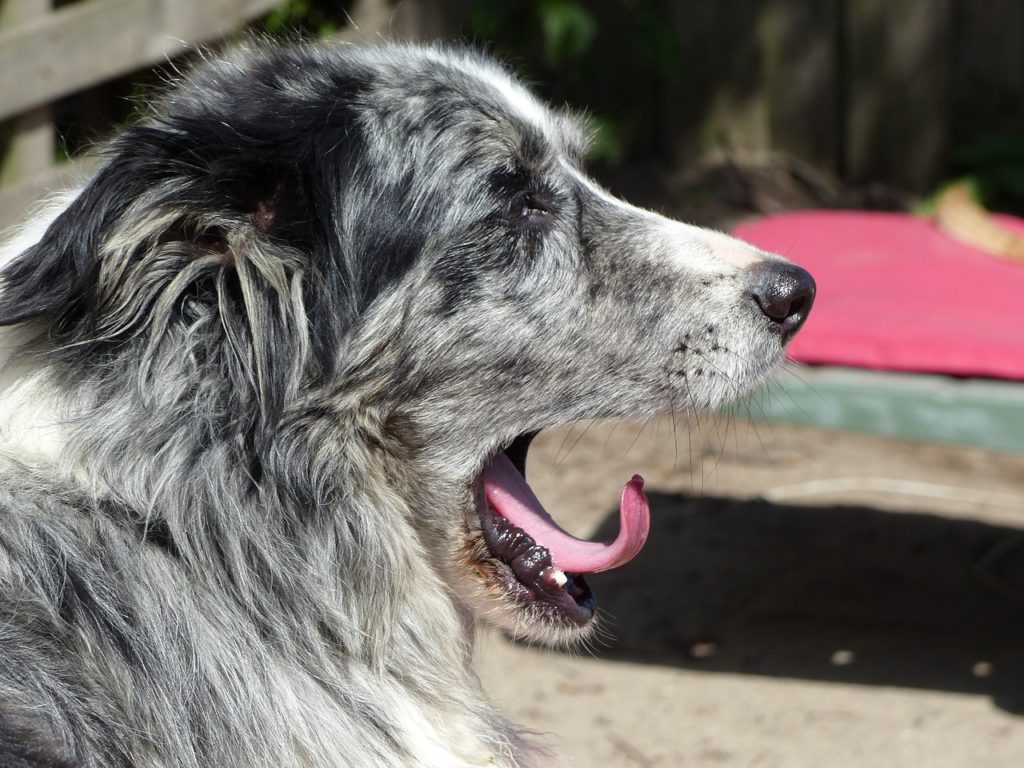
Yawn Contagion
Science doesn’t understand what prompts yawning, but they know they’re contagious. If you see someone yawn, catch a glimpse of a person yawning in a photo, or even THINK about a yawn, your mouth starts to gape. (I can verify – writing this article was brutal!) But that contagion isn’t unique to us. Dog yawning shows the same response!
Dogs pick up yawns from each other and even from their owners. This reinforces the bond shared between our two species. And in 2013, The New York Times shared a study that documented the behavior. The closer the dog and human’s relationship, the more likely the canine would yawn when they saw their human do so first (and vice versa). And the science appears sound. Try looking through images of other animals yawning without feeling the reflex kick in. Bet you can’t!
Dog Yawning: The “Unspoken” Language
If you see a dog yawning when they’re relaxing on a bed – or if they fall asleep shortly after – there’s a good chance the yawn was nothing more than a typical yawn. After all, when you’re exhausted, you notice the yawns coming more and more frequently. The same process works in our pups. If they’ve spent the day playing hard, hiking down trails, or swimming in the pool, their energy reserves are at zero. Their brains settle down for the evening, and you see doggie yawns as a result.
But what about when you see a dog yawning at other times of the day? When you wouldn’t expect to notice sleepiness? What do those yawns represent? As it turns out, your dog’s communicating different messages to you and those around them. And it’s important to pay attention to those cues to keep your dog healthy and happy.
Dog Yawning: The Calming Signal
In the wild, when a more dominant or aggressive wolf approaches another member of the pack, the submissive wolf will often turn their head and yawn. The silent message is clear, “I’m not trying to cause trouble.” And the reaction is usually immediate: the aggressor backs away, leaving the confrontation diffused.
A dog yawning in our domestic world acts in the same way. This is considered a “calming signal.” It’s a method of avoiding conflict. The yawn deflects the potential threat without needing to adopt a submissive posture. At most, your dog will avert their gaze to avoid a mistaken challenge. You may also see licking of the lips or very exaggerated slow-walking.
There are over THIRTY calming signals built into our dogs at birth. But when you see your dog yawning when he goes up to another (potentially larger) pup in the dog park, this is the one going into practice.
Dog Yawning: Confusion
Sometimes you’ll catch a glance of your dog yawning. It may happen during a training session or following a reprimand. You probably even recognize the look your dog gives you at the same time. They may pace or dance on their feet in one place. More than anything, the message is clear: “I have no idea what you’re trying to tell me.”
Dogs yawn when confused. They know you want SOMETHING, but they aren’t sure WHAT. And until they can puzzle out what the meaning is, they’re going to yawn and try to get their brain moving. Our Greyhound is famous for her confusion yawns when she feels it’s time for dinner. We feed everyone at the same time every day. But she likes to try to get dinner early. And when we tell her, “Not yet – [insert number here] minutes,” she’ll walk back to her bed with one yawn. It’s hard to say whether she’s confused over the time limit or that we won’t cave and feed her early. But it tends to happen most nights.
Dogs undergoing training sessions often yawn if you skip ahead in the process. If you’re seeing your dog yawning, you need to pause and take a step back. Go to a command they KNOW to get their paws back under them. Or even consider calling it quits for the day. It’s better than causing them too much pressure.
Dog Yawning: Stress
Of course, you can see your dog yawning at training and have a different meaning entirely. If you see excessive yawns with flattened ears, tense muscles, and lip-licking, you have another problem. Your dog’s moved beyond confusion into a new realm entirely. That’s a stressed and anxious dog.
Dogs that feel uncomfortable with a situation, person, or environment start yawning. They get stuck in place (such as vet appointments), and they choose yawns over whining. You’ll pick up on the distress if you’re paying attention. If you’re able, try taking your dog for a walk outside to help calm them down. But if you see stress yawns frequently, it’s time to talk to your veterinarian. They may need medical therapy or work with a trainer to break the cycle.

The “Howl Yawn”
Most of the time, we consider yawns a sign of boredom. But canines aren’t one to adopt yawning as a sign of lack of entertainment in their lives. (No, they’re going to pick up bad habits, instead) So when you see your dog yawning as you load up the car for a family trip or reach for the leash for your daily walk, it means something entirely different. (Who doesn’t love time outside?)
Dog yawning translates to excitement. As they’re bouncing around with the gaped mouth, they’re telling you, “Let’s go, let’s go, let’s go!” And these yawns are special. More often than not, you’ll hear an audible sound. The sounds for each dog are different, but the “howl yawn” comes with a breathy note to it. (In contrast, you don’t typically hear other dog yawns) The sound sets this dog yawning apart – as does the vibration and bounding of your dog.
While we wonder whether our girl understands some words, “Grandma” and “Grandpa” happen to be near the top of the list. And she knows when we start packing her little tote bag that we’re going over to my parents. She’ll start jumping and prancing around our feet, and you hear that “howl yawn” in quick repetition. (She also does it the entire car ride over – which, luckily, isn’t very long)
All the Cues
Dog yawning is much more complex than yawns in humans. Our canine companions use the involuntary reflex as a method for communication. And it’s our job to watch for the cues they give us so we can understand what they’re saying. If we don’t pay attention, we may end up missing an important sign of chronic stress, which isn’t fair to our pup.
But boredom? That’s not on the list!

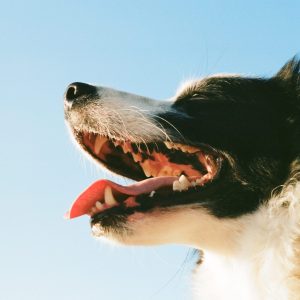
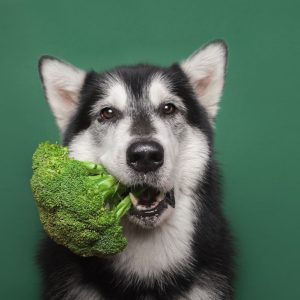

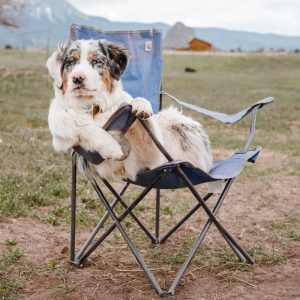
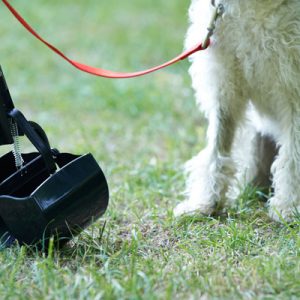
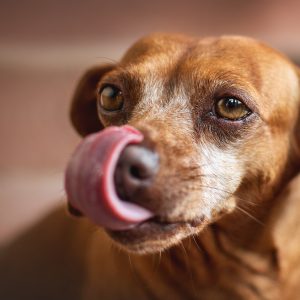
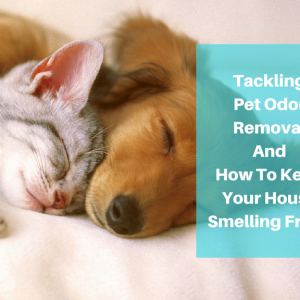

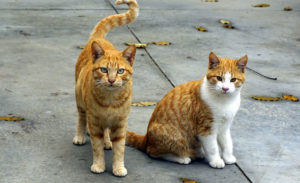
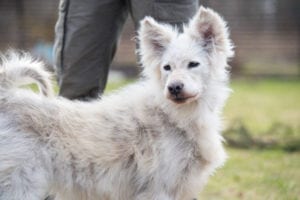
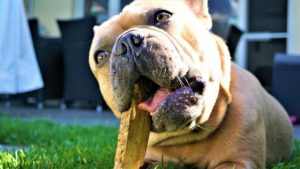

No comment yet, add your voice below!